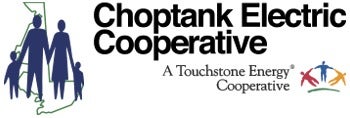Insider’s Guide to Keeping Your Home Warm
No matter how hot summer tends to get on the Eastern Shore, the typical residential home actually consumes more energy during the winter months. Hard to believe? Regardless of the heating method (heat pump, natural gas, propane, wood, pellets, etc.) it takes more energy to maintain a house between 60-70 degrees inside, when the average temperature outside the walls is in the low teens.
Heating contributes to between 50-60% of the home’s total energy consumption. This means that for every $100 spent on energy, $50-$60 goes to heating in the winter.
Reducing your thermostat to 68 degrees is the easiest and most efficient way to reduce usage. The Department of Energy reports that for every degree above 68, one can expect a 3% increase in usage per degree. Setting your temperature to a comfortable 72 degrees can mean an
increase of 12% on your bill (per month!).
Changing filters in return vents or air handlers every 30-60 days will avoid restricted airflow. Restricted airflow could decrease the operating efficiency of a heating system and cause usage to rise drastically in some cases.
Keep doors and vents in unused rooms open to avoid pressure buildup and/or create poor circulation. Closing doors and vents can increase duct leakage even in well-sealed duct work. In turn, the run time for the system will be longer, resulting in increased usage and higher energy bills.
Did you know that using a 1,500 watt portable space heater for only 10 hours a day will use about $60 worth of electric per month, per unit? Portable space heaters are a good option for certain situations, but used often or if multiple units are used, the usage can add up.
For more tips on how to save, visit https://choptankelectric.com/energy-efficiency.
